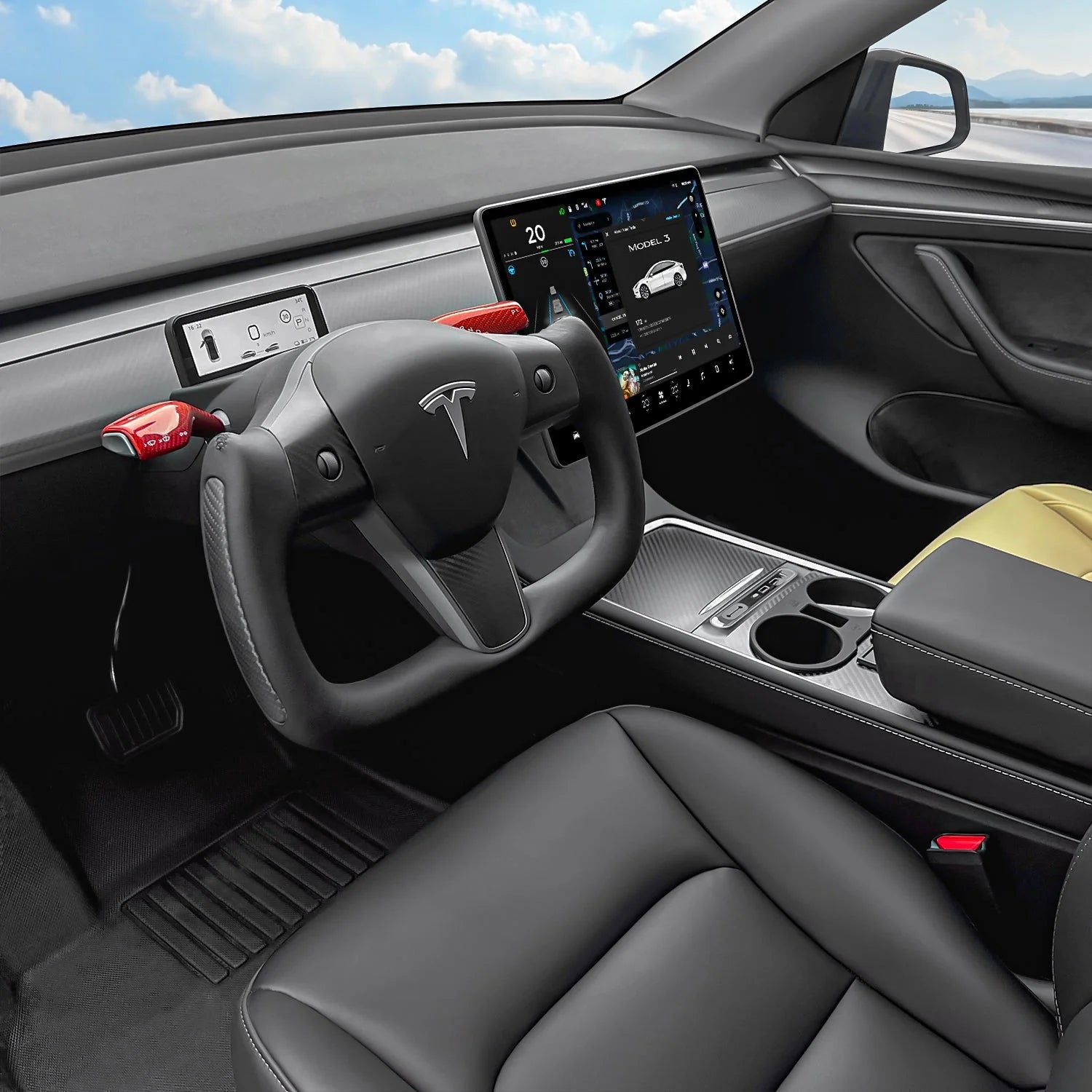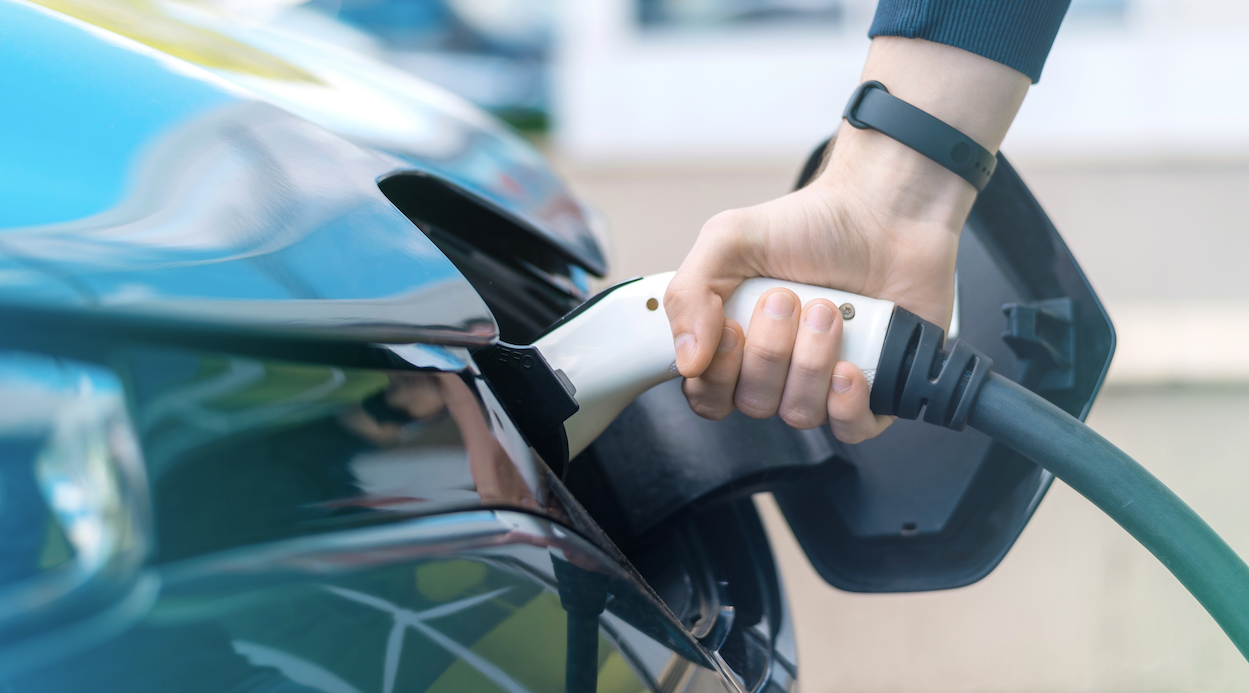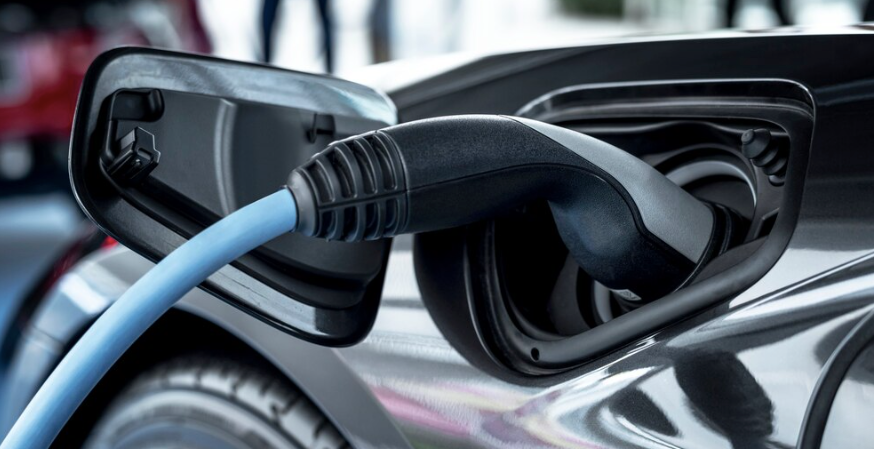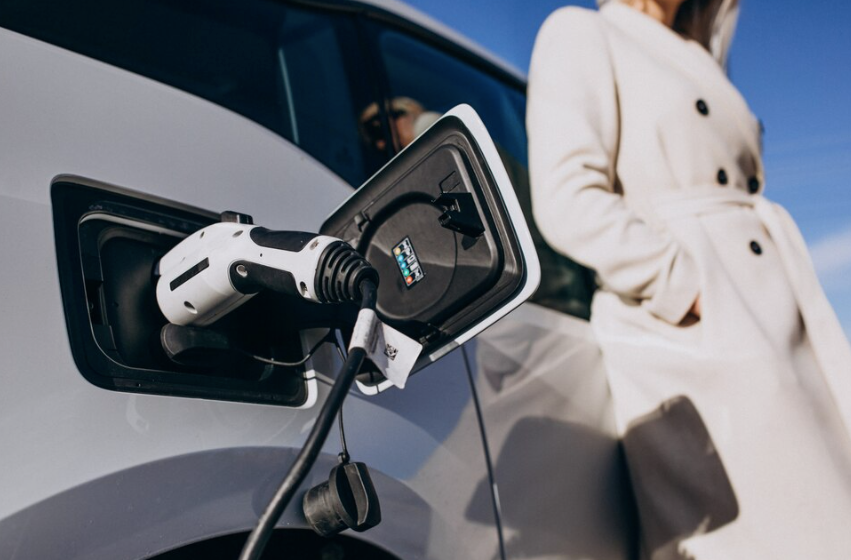Актуализиран на: 14.02.2025 г
Фен ли сте на електрическите автомобили, произхождащи от САЩ, и планирате пътуване до Европа? Това наистина е интригуваща мисъл, но в индустрията за електрически автомобили може да се сблъскате с едно предизвикателство: да заредите вашия американски... електрически автомобил в ЕСПроблемът обаче е, че европейските страни имат свой собствен уникален стандарт за зареждане на електрически превозни средства по този начин създавайки объркване за пътуващите.
Но не се тревожете! В тази статия ще го разбием за вас. Ще споделим седем важни стандарта за зареждане на EV в индустрията за електрически автомобили в ЕС и сега ще бъде лесно за вас да ги разберете.
Ще презаредите уверено своя електрически автомобил и ще се насладите на вашето европейско приключение без проблем.
Какви са основите, когато става въпрос за зареждане на електрически превозни средства?
При зареждане на електрически превозни средства трябва да се вземат предвид различни видове щепсели и различни нива на зареждане. Ниво 1 използва стандартен домашен контакт, който обикновено е сравнително бавен, но може да е удобен за нощно зареждане.
Зарядните устройства от ниво 2 работят с контакт от 240 V AC и осигуряват много по-бързо зареждане, така че може да са подходящи за почти всички домашни инсталации и някои обществени станции.
Ниво 3 е също така бързо зареждане с постоянен ток и осигурява най-бързото зареждане чрез своите мощни зарядни устройства, намиращи се на обществени станции, които могат да заредят повечето електрически превозни средства до 80% за около 30 минути.
Електромобилите обикновено са оборудвани със система за контрол и улавяне на шума (CCS) или CHAdeMO конектори за бързо зареждане с постоянен ток; съвместимостта обаче се различава в зависимост от региона и модела на превозното средство.
EV автомобилната индустрия
Преди да преминем директно към стандартите за зареждане в ЕС, е по-добре първо да разберем цялата индустрия за електрически автомобили.
Индустрията на електрическите автомобили донесе огромна промяна в транспорта с ниски емисии, намалявайки въглеродния ни отпечатък и в крайна сметка допринасяйки за по-благоприятна околна среда.
Освен това, напоследък електрическите автомобили направиха огромен скок напред в Съединените щати и днес много производители обслужват различни вкусове и бюджети, за да произведат пълната гама от модели електрически превозни средства.
От компактни електрически превозни средства, идеални за пътуване в града, до луксозни електрически SUV-ове, идеални за пътуване със семейството ви, има електрически автомобил за почти всеки повод.
Но какво се случва, ако сте един от онези ентусиасти на електрически автомобили, които искат да прекарат своя американски електрически автомобил през Атлантика, за да обиколят живописна Европа? Ето обратът. Индустрията за електрически автомобили е претърпяла огромен напредък, но стандартите за инфраструктура за зареждане между щатите на САЩ и европейските държави може да се различават значително, което води до объркване и потенциални препятствия за пътуващите отвъд международното разделение.
Да видим как.
EV Зареждане в САЩ и Европа
Сега нека разгледаме разликите в зареждането на EV в Съединените щати и Европа, което може да стане от съществено значение за бъдещ пътник из Европа с американска електрическа кола.
Инфраструктурата за зареждане в страната се разраства главоломно през годините. Обикновено съществуват три нива на зарядни станции:
- Ниво 1 Тип 1 конектор (Домашни зарядни устройства за електрически превозни средства): Унизително наричани като най-бавните скорости на зареждане, домашните зарядни устройства за електрически превозни средства могат да използват стандартен 120-волтов домашен контакт. Идеални за зареждане през нощта в удобството на вашия дом, това може да се разглежда като директно включване на превозното средство в стандартен стенен контакт.
- Конектор тип 1 ниво 2: Зареждането от ниво 2 е по-бързо и се използва предимно в обществени съоръжения като паркинги, работни места и някои жилищни сгради. Използва 240 волта, подобно на сушилнята или фурната в дома. Това ниво на зареждане изглежда бързо, защото зарежда по-бързо.
- Бързо зареждане с постоянен ток CCS1 или NACS (ниво 3): Бързото зареждане с постоянен ток е най-бързият вариант в САЩ. Това е зарядно устройство, което обикновено се поставя край магистрали и главни пътища, така че е идеално за дълги пътувания. Това са зарядни устройства, които предлагат добро зареждане за кратко време. В момента в САЩ има два основни стандарта за бързо зареждане - CCS1 и NACS (стандартът, наложен от Tesla и който ще стане по-популярен през следващите години).
Въпреки това, когато кацнете своя американски електрически автомобил в Европа, разликата в стандартите за зареждане е значителна. Повечето европейски страни използват два основни типа конектори за зареждане:
- Конектори тип 2 (Mennekes): Конекторите тип 2 са друг вид конектор, който се използва широко в Европа за зареждане с променлив ток. Това е основно кабел от ниво 2 и може да се инсталира в домове, фирми, както и на обществени зарядни станции. Основната разлика е, че поддържа 3-фазно зареждане.
- Комбо 2 (CCS): Комбинираните 2 конектори са много подобни на японския тип, но се използват в устройства за бързо DC зареждане, обхващащи Европа. Те обикновено използват високоскоростни зарядни устройства (150 kW и повече), които ще са необходими за дълги пътувания в чужбина.
Факт е, че разликата в системите за зареждане между САЩ и Европа основно включва повече от конекторите, но стига и до напрежението и тока. Това наистина може да затрудни съвместимостта на американските електрически автомобили в Европа изцяло.
Зареждане на електрически превозни средства в най-популярните туристически дестинации в Европа:
Зареждане на електрически превозни средства в Европа се е разширил значително, което улеснява пътуването на собствениците на електрически превозни средства. На целия континент има над 700 000 обществени зарядни станции.
Shell Recharge например предлага голяма мрежа от точки за зареждане в 33 страни. Тези станции са на места като търговски центрове, ресторанти, хотели и туристически места, така че шофьорите да могат да зареждат удобно.
Приложения като Shell Recharge помагат за лесно намиране на тези точки. Планирането на пътуване с EV в Европа вече е по-лесно с инструменти, които начертават маршрути и предлагат спирки за разглеждане на забележителности или почивки.
Тъй като се появяват повече бързи зарядни устройства и места за зареждане, екологичното пътуване в Европа става все по-практично и приятно.
Какво е Smart EV зареждане?
Интелигентното зареждане за електромобили включва усъвършенствана технология, за да накара електрическите превозни средства да се зареждат по начин, който увеличава максимално ефективността и гарантира, че няма да навреди на електрическата мрежа. Тя включва оптимизиране на времето за зареждане, когато енергията е по-евтина или достъпна, управление чрез приложения за смартфон и използване на възобновяема енергия за зареждане на автомобила.
Освен това включва извършване на балансиране на натоварването, за да се смекчи претоварването на мрежата и позволява обмен между превозно средство и мрежа, което може да доведе до приходи за енергийния потребител.
Създаването на функции за интелигентно зареждане, лесно и системи за резервиране на зарядно устройство подобрява потребителското изживяване, като същевременно предоставя ценни данни за оптимизиране на моделите на потребление на енергия, играейки ключова роля в еволюцията на устойчивата инфраструктура на транспорта.
Сега нека поговорим за стандартите за зареждане на 7 EV в Европа, създадени от индустрията за електрически автомобили.
7 стандарта за зареждане на EV в Европа
В Европа са разработени редица стандарти за зареждане, за да се гарантира съвместимостта, безопасността и ефективността на зареждането на електрически превозни средства (EV).
Тези стандарти диктуват различни елементи, необходими в системата за зареждане на EV; вариращи от физическите конектори, използвани до комуникационни протоколи и правила за безопасност.
Ето седем основни стандарта за зареждане на EV в Европа:
· Конектори тип 2 за AC зареждане
Конектори тип 2 са най-широко разпространени в Европа, откакто се превърнаха в стандарт за променливотокови зарядни устройства, главно поради тяхната гъвкавост и съвместимост с широк избор от електромобили. Те могат да се използват както в монофазни, така и в трифазни конструкции и следователно осигуряват атрактивен компромис между търсене и гъвкавост за ефективни скорости на зареждане.
· Комбинирана система за зареждане (CCS2)
Комбинираната система за зареждане (CCS2) е един конектор, поддържащ възможности за зареждане с постоянен ток. Той е широко възприет поради гъвкавостта, която предоставя чрез бързо зареждане с постоянен ток, необходимо за бързо презареждане при по-дълги пътувания. Това е така нареченото “бързо зареждане” и такива зарядни в Европа достигат до 350 kW.
· CHAdeMO: Стандартът за бързо зареждане DC
Друг стандарт за зареждане с постоянен ток, CHAdeMO, първоначално е разработен в Япония, въпреки че Европа също го е възприела. Проектиран с особен фокус върху по-бързи зареждания, които биха могли да удължат пробега на превозното средство, за да се улеснят по-дълги пътувания, той се отличава със значителен пренос на мощност и много стабилна безопасност. Зарядните устройства CHAdeMO стават все по-редки, тъй като има малко превозни средства, които могат да ги използват. Само по-стари японски електрически автомобили все още използват CHAdeMO, като например Нисан Лийф, Nissan env200, Mitsubishi iMiev, Kia e-Soul. Зарядните станции CCS2 са много по-популярни в Европа, следователно a CCS2 към CHAdeMO Адаптерът е разработен.
· IEC 62196: Щепсели и контакти
Очертанията на щепсела в рамките на стандарта IEC 62196, отнасящи се до щепсели, контакти и съединители за превозни средства, описват общите изисквания, които съществуват по отношение на съставните части на това, което действа като съединители.
Това е по-широко описание в различните форми на използване на конектори, като тип 1 и тип 2 и системата CCS2, като същевременно обхваща безопасността и оперативната съвместимост между различните модели електромобили и разглежданата инфраструктура за зареждане.
· Стандарт за безопасност EN 61851-1
Стандартът EN 61851-1 посочва общите изисквания за членовете на проводящите системи за зареждане на електрически превозни средства, осигуряващи безопасност в електрически, механични и термични аспекти. Той определя общите общи изисквания за цялото устройство, т.е. зарядно устройство, кабел и връзка с превозното средство.
· Стандарт ISO 15118 за автоматично таксуване и свързване на захранване
ISO 15118 стандартизира комуникационния протокол между електрическото превозно средство, както и станцията за зареждане. Той поддържа функции за включване и зареждане, при които се извършва автоматично удостоверяване плюс таксуване и възможности за реакция при търсене, когато има комуникация между превозното средство, както и мрежата, като по този начин оптимизира зареждането, което зависи от търсенето на мрежата в реално време, както и от ценообразуването.
· Протокол за зареждане в режим 3
Протоколът за това как безопасно да включите зарядно устройство за EV в контакта за променлив ток по безопасен и управляван начин е дефиниран в Европа с конвенционално позоваване като зареждане в режим 3. Обикновено се използва за домашно и обществено зареждане, като предлага по-високо ниво на безопасност чрез електромеханична блокировка между входа на автомобила и конектора. Това гарантира, че захранването се подава само след като конекторът е правилно свързан и комуникацията е установена.
Обществените станции за зареждане обикновено следват протокола за зареждане в режим 3 заедно с електронното фактуриране след зареждане на EV.
Е-фактуриране Последващо таксуване на EV
Електронното фактуриране след таксуване на EV от доставчик също включва ефективно таксуване, така че процесът да може да продължи безпроблемно без хартия. В края на сесията за зареждане данните, свързани с потреблението на енергия и разходите, се обработват в електронна фактура и се изпращат директно до имейла или приложението на потребителя.
Този ефективен метод гарантира лесни плащания и прозрачно водене на записи, съобразени с екологичния етос на електромобилите, предоставяйки изживяване на потребителите, което е ефективно и устойчиво в екосистемата на цифровизираната мобилност.
Има ли специфични приложения или инструменти, които могат да помогнат за намирането на съвместимо стандартно зарядно устройство за електрически превозни средства от САЩ в Европа?
Пътуване в САЩ.SЗареждането на електрически превозни средства със спецификация .-spec в цяла Европа е особено трудно поради разнообразието от стандарти за зареждане и видове конектори.
За да се осигури безпроблемно изживяване, е важно да се използват автентични инструменти, които помагат за идентифициране на подходящи станции за зареждане.
Ето някои от най-добрите приложения и инструменти, които ще ви помогнат:
- Споделяне на PlugShare: Глобална карта за зареждане на електрически превозни средства, която помага за намиране на съвместими станции, филтриране по тип конектор и четене на отзиви от потребители за актуални подробности за зареждането. Достъпна чрез уеб и мобилно приложение.
- Карта на таксуването: Европейско приложение, предоставящо информация за наличността на зарядни станции в реално време, планиране на маршрут и подробна информация за станциите, за да се гарантира съвместимост с вашия американски електромобил. Поддържа множество типове конектори.
- По-добър инструмент за планиране на маршрути (ABRP): Пътуванията с електрически превозни средства се планират с подходящи спирки за зареждане въз основа на типа на превозното средство, нивата на заряд на батерията, трафика и метеорологичните условия.
- все пак: Приложение за европейска мрежа за зареждане на електрически превозни средства, обхващащо над 500 000 станции, предлагащо информация за наличност в реално време, помощ при навигация и удобен за потребителя интерфейс за безпроблемно зареждане.
- Tesla Supercharger и отворени Superchargers: Мрежата на Tesla в Европа поддържа неевропейски модели на Tesla с адаптери, предлагащи високоскоростно зареждане и интегрирана навигационна система за намиране на близки Superchargers.
С какви предизвикателства може да се сблъскате, когато използвате американски електрически превозни средства с европейски зарядни станции?
Използване на U.Sелектрическите превозни средства (EV) в Европа представляват няколко предизвикателства поради различията в стандарти за зареждане на автомобили, инфраструктура и енергийни системи.
Ето основните пречки, с които може да се сблъскате:
1. Несъвместимост на конектора
САЩSИзползването на електрически превозни средства различни щепсели за зареждане отколкото европейските станции. Ще ви е необходим адаптер за да свържете колата си към повечето европейски зарядни устройства.
2. Ограничения на скоростта на зареждане
Дори с адаптер, колата ви може зарежда се по-бавно или изобщо не работи на някои бензиностанции. Внимателно проверете номиналния ампераж на закупения адаптер. Автомобилите Tesla могат да приемат 500A +.
3. Разлики в напрежението и мощността
Европа използва по-високо напрежение отколкото САЩ.SЗареждането у дома може да е по-бавен или имате нужда от специален конвертор да работи правилно.
4. Ограничен достъп до Tesla Supercharger
Някои Суперзарядни устройства на Тесла в Европа работа с U.SТесла, но не всички. Може да ви е необходим CCS2 адаптер, а по-старите модели може да не се поддържат.
5. Проблеми с плащането и удостоверяването
Много европейски зарядни устройства се нуждаят RFID карти или локални приложения, за да започнете таксуването. Някои платежни системи от САЩ.Sмай не работи в Европа.
6. Наличие на съвместими адаптери
Ще ви трябват CCS1 до CCS2 или Адаптер тип 1 към тип 2Те могат да бъдат трудно за намиране в Европа и някои бързи зарядни устройства не позволявайте адаптери.
7. Разлики в мрежата за навигация и зареждане
Колата ти навигационна система може не показва европейски зарядни устройстваИзползвайте приложения като PlugShare или ABRP, за да намерите станции за зареждане.
Заключение
Така че това би било как да зареждате американска електрическа кола в ЕС. Имайки предвид тези 7 стандарта за зареждане на EV, вие ще бъдете добре подготвени да се справите с многобройните форми на инфраструктура за зареждане, за да осигурите съвместимост и безопасна и ефективна доставка.




